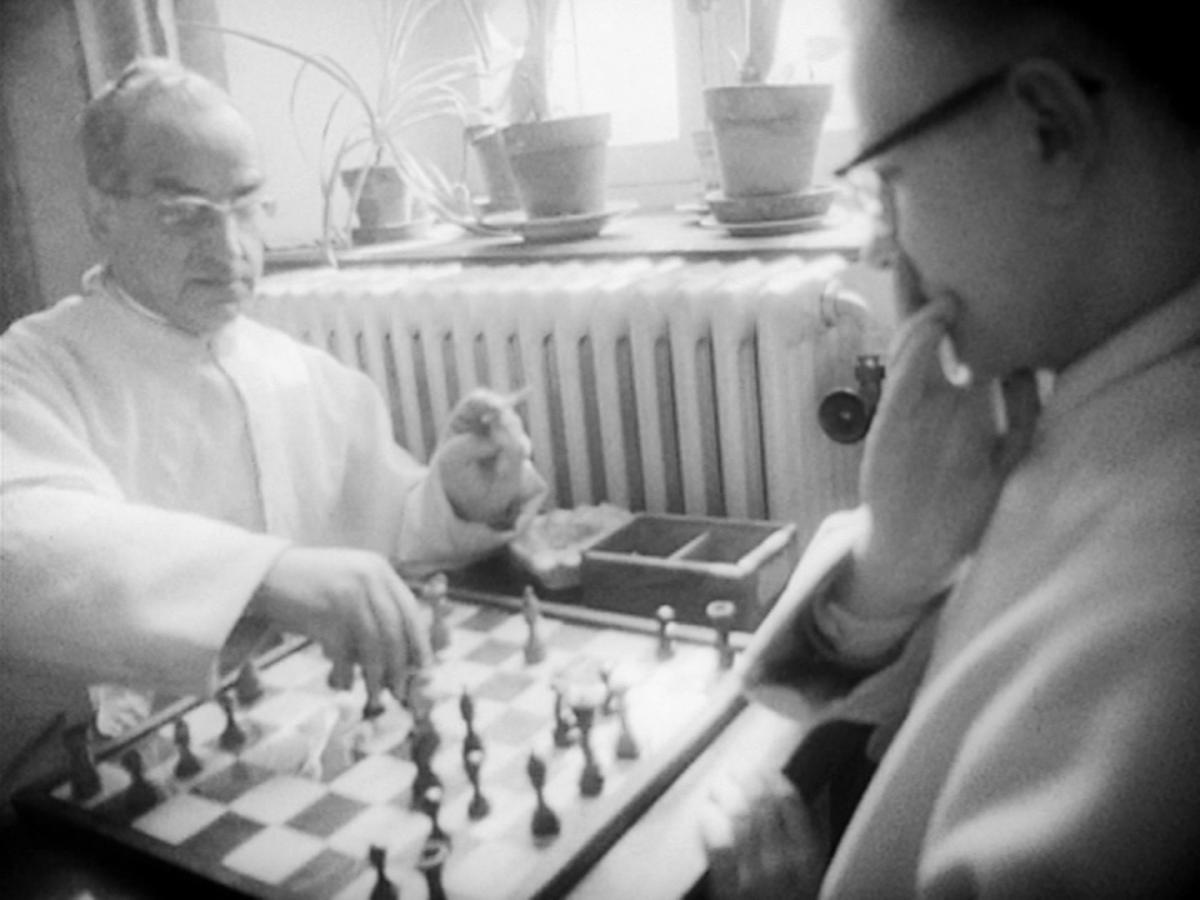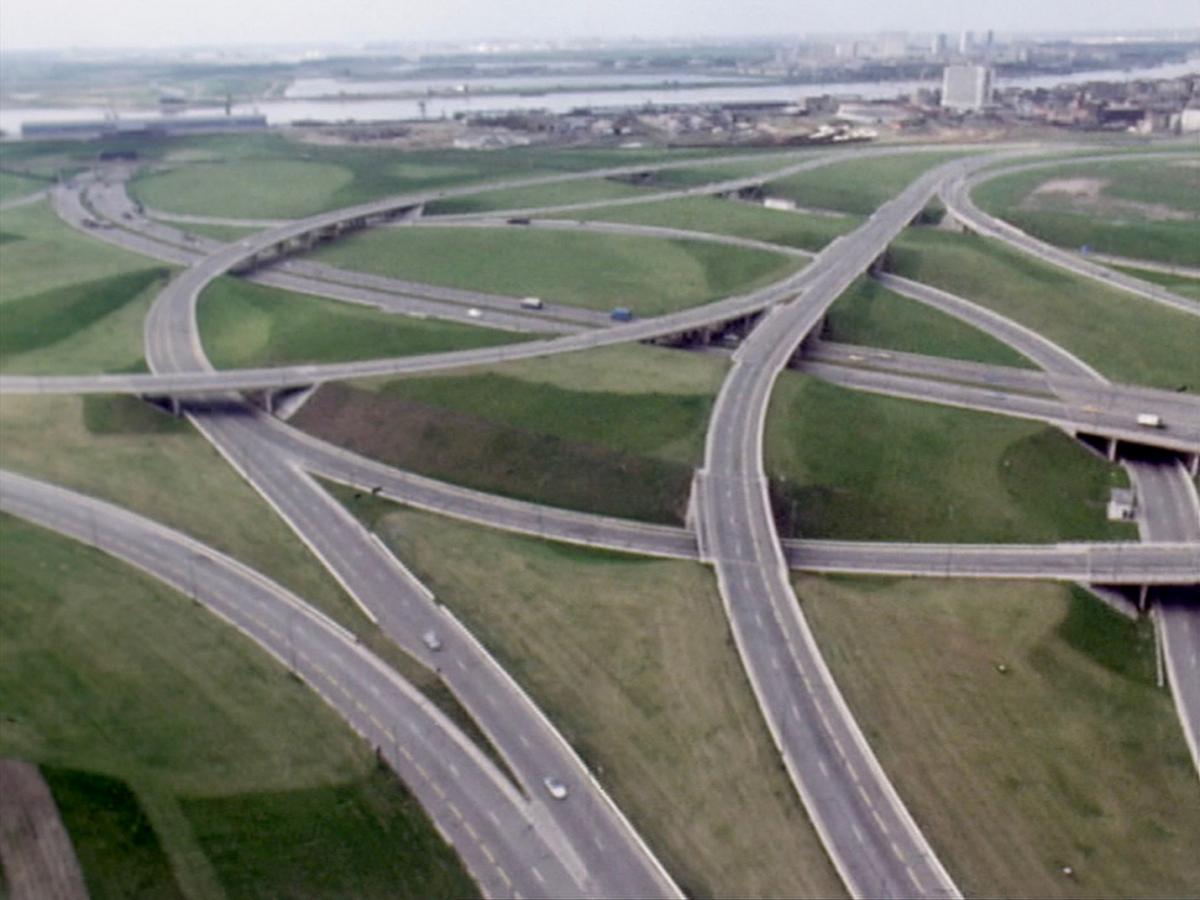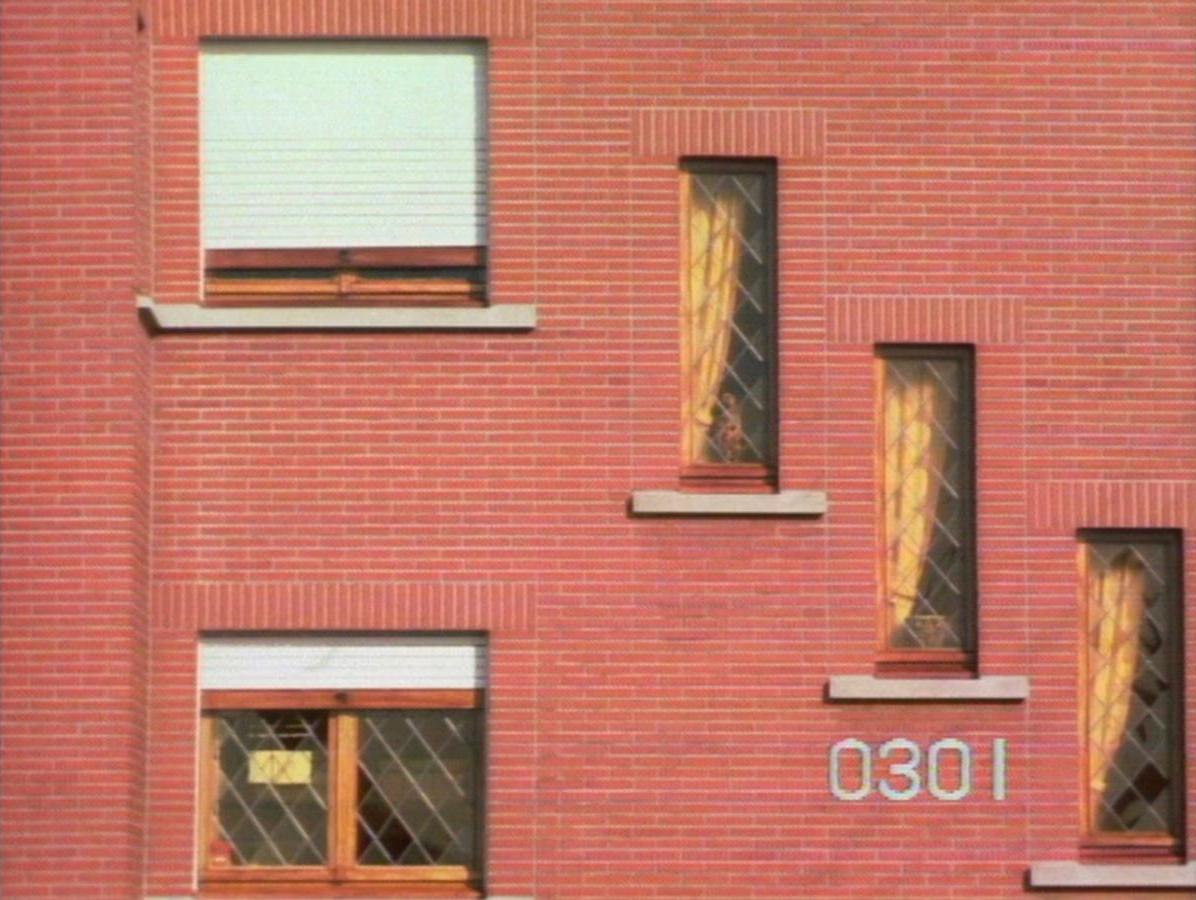Four Introductions to Four Television Productions by Jef Cornelis

Park Abbey Heverlee
At the beginning of his long career at the public broadcasting network VRT, Jef Cornelis directed three films about historical buildings: one about Alden Biesen Castle, a military castle in Bilzen; the second about Park Abbey, a church and monastery in Heverlee; and the third about Merode Castle, a château in Westerlo. The second film in the series, Park Abbey Heverlee, was first broadcast on 25 December 1964. Cornelis’ reputation was immediately established. He won the Grand Prize for Documentary Film, presented during the sixth National Festival of Belgian Film in Antwerp.
Stylistically, Cornelis’ approach is somewhat similar to the method used by Alain Resnais in L’année dernière à Marienbad (1961). Cornelis himself pointed out a connection to Alexandre Astruc’s so-called Caméra-Stylo. “Like Astruc, I seek ways to build up to something; I seek rhythms,” explains Cornelis. The camera glides past walls and railings, stalks cautiously up stairs and then focuses on the Norbertine monks, who move around in formations. You could say that the camera work accentuates the eternal truth of faith. “I am extremely serious,” Cornelis said about this in an interview, “but there should eventually be a twist…” At the end of the film, something unpredictable does indeed occur: first, we hear metallic noises and then the camera starts to move about erratically. The camera is no longer subject to the discipline exerted by the architectural elements – the camera has broken free, literally, and wobbles a bit as it winds its way through a corridor. We enter a room with the light against us. The camera presents us with dirty or filthy images. We then see two smoking monks playing chess before finally discovering the true origin of the noise: two monks playing a game of three-cushion billiards! What started as a true ode to our ancient heritage and a glorification of religious dignity has ended in an unmasking. The religious masks have fallen off – the monks are human beings, just like you and me. They play chess… and even billiards.
The finishing touch, however, is that the last sequence of the film was staged. The billiard table was indeed located in the abbey, but Cornelis had the monks brought there from the Norbertine monastery of Tongerlo. In other words, he did not record something that fellow directors possibly might not have included out of discretion. No, he noticed the billiard table and asked a few monks, whom he had summoned for the occasion, to play billiards on it. Those same “extras” also “acted” in the rest of the film. They performed a mass, walked through the corridors and ate meals. Park Abbey was as good as deserted when Cornelis showed up there in 1964 with his film crew. Cornelis remembers: “There were no longer any monks there, nor cattle. The cattle that you see in the film were supplied by a farmer. Even the pigeons were extras…” Cornelis wanted to celebrate the religious architecture, but also depict the banality of life in a monastery. In order to realize both ambitions, he didn’t hesitate to fake reality and use stand-ins.

The Street
The film The Street opens with images of a demonstration in a street. This is immediately followed by shots of a motorway, filmed from the air; the camera is sucked in as it were, from the motorway to the heart of the city (Antwerp). The voice-over text sets the tone very clearly: “There is not much more left of the street than a thoroughfare for traffic – to use Le Corbusier’s words, ‘a machine of movement’, a factory equipped to make traffic run smoothly; a machine that, just like every other machine, only knows its own rules and takes no account of what exists beyond it. The traffic thoroughfare which, in times past, stopped at the city gates and had no street name, has now penetrated the city as a divisive element. The living space of the city, the street, has degenerated purely into a space for traffic.” The opening shots by director Jef Cornelis and the first sentences from scriptwriter Geert Bekaert convey a clear message – a message that remains clear throughout the rest of the film. The text repeatedly states that the car has destroyed the street and public life. The images reinforce this tale of loss. Shots of Belgian cities, overrun with cars and trucks, are interspersed with idyllic sequences of Italian villages where children spend their whole day playing in the street. A traffic route in Antwerp is contrasted with a piazza in Italy. In short, the film is a savage indictment of motorized traffic in our cities.
Yet Cornelis and Bekaert conceived an astonishing end for this film, which is both radical and propagandistic in tone. The final two and a half minutes of the film are remarkably dense. Scenes follow each other in quick succession: first we see a shot of the front of Antwerp Central Station; then the camera makes a 360 degree turn away from the station before returning to it again. Rather than featuring the ambient noise of the city, the film soundtrack features the apocalyptic cawing of a crow. At the point where the camera comes to a halt and the station is once again in full view, the close-up of the station makes way for a shot of the roof of the château at Chambord. While the camera moves over the roof, sounds of a rocket launching can be heard, followed by the first verses from the book of Genesis: “In the beginning God created the heaven and the earth. And the earth was without form and void; and darkness was upon the face of the deep. And the Spirit of God moved upon the face of the waters. And God said, ‘Let there be light’: and there was light. And God saw the light, that it was good: and God divided the light from the darkness.” Once the camera has gently panned out to show the château in its entirety, a list of all the people who worked on the film is recited. The end.
Referring to the epilogue of the film The Street, we can conclude that Cornelis is not only a maker of documentaries with a clear message; he is also a creator of extremely tightly edited image and sound clips – sequences of sound and vision that intrigue through their compactness, their heterogeneity and even their internal incompatibility. It is up to each of us to unravel this confusing tangle of images and sounds at the end of The Street. This “difficult” end did nothing to diminish the popularity of the film. In 1973 Cornelis received the Golden Prague Award, presented at the 10th Prague Television Festival. This marked the beginning of a triumphant tour of the film (which also appeared in a French and English version) throughout Europe.

Highway N°1
For the television film Highway N°1, Jef Cornelis once again worked with Geert Bekaert, who provided the screenplay. The film, which paints a portrait of the highway between Antwerp and Mechelen – and specifically the stretch between Kontich and Walem – deals with spatial planning on either side of an important Belgian arterial road, the first state highway in Belgium.
Just as in The Street, 1972, Bekaert focuses on the terrible effect of motorized traffic on the living environment. However, for this film Cornelis went in search of a different visual approach to address this problem. Rather than showing a highway congested with traffic, he shows a bleakly empty road featuring only a wrecked car. A staged scene takes the place of a recording of raw reality. Cornelis doesn’t wait patiently for a protest march to come along that he can record, he organizes his own march and has it collide on the highway with a marching band and a parade of majorettes. Everything in Highway N°1 is conceived, including the soundtrack written by composer André Laporte. The film shows constant images of the highway, but the sound of traffic is almost completely absent. Another rhetorical register used by Cornelis is that of exaggeration. He uses two Formula 1 racing cars to show how traffic has strangled the life out of the hinterland alongside the highway. Cornelis also uses humour to get his point across. He intersperses comedy – such as a parade of giants on the highway – with depressing images such as roadkill he has scattered along the road surface. At some points Highway N°1 is purely grotesque, for example where the road becomes the scene of skidding cars, including a Rolls-Royce. The film ends in a similar way to Park Abbey Heverlee, 1964: at a billiard table. The off-screen speaker has barely spoken his lines (“people live on as if the highway did not exist”) when the camera zooms in on a roadside café with people having fun and playing billiards. While it is true that Highway N°1 portrays the sterility of life alongside a major traffic artery, it also shows that people get on with their lives as if there was nothing wrong.

Voyage à Paris
At the request of the organizers of Antwerp 93 European Capital of Culture – acting on behalf of Bart Verschaffel who was responsible for the project Philosophy and Literature for the 1993 cultural programme – Jef Cornelis was given the opportunity to produce the film Voyage à Paris. Sociologist Rudi Laermans was responsible for the screenplay. Cornelis had already met Laermans in 1989 when he was working with Bart Verschaffel and Lieven De Cauter on the live discussion programme Container. The sixth episode of Container, with its theme of “the origins of the department store”, may well have formed the basis for Voyage à Paris, in which first the street markets are explored, then the Palais Royal as the mother of all shopping paradises, followed by the famed Parisian arcades and finally the department stores.
Letters by famous visitors to Paris – Honoré de Balzac, Charles Baudelaire, Walter Benjamin, Cyriel Buysse, Alphonse Daudet, Sébastien Mercier, Henry Miller, Rainer Maria Rilke, Emile Zola and Guillaume Appolinaire – are used to tie in the image of the “city of light” with the history of consumerism, from the old ways of buying and selling goods to the contemporary. To illustrate the “modern” relationship between the salesperson and the consumer, a closer look is taken at the seductive Parisian shopping arcades. A glimpse into the present-day situation is given as the camera roams through a gigantic store selling electrical equipment, stopping at the microwave oven and television displays. Later on, the camera is literally sucked into the publicity that has completely taken over the mediation of the goods. Voyage à Paris not only focuses on the merchandize itself but also on how we see it, and gendered ways of seeing in particular. The following sequence illustrates this: a man in a Parisian store is seen trying on a pair of sturdy shoes, while in a different store a woman is trying on lingerie. In short, the woman is looking at a piece of merchandize which she will wear so that the man in turn will see her as a piece of merchandize for his benefit. This is the philosophy presented to us by Voyage à Paris. At the end of the film we see the ultimate product in human merchandizing: the prostitute. Cornelis makes a brutal comparison with meat being cut up for consumption. “The prostitute”, according to Laermans in the first scenario outline of Voyage à Paris, “is the figure in which the person and merchandize come together and at the same time the ultimate urban display and consumer object.” The soundtrack of the closing titles confirms this. A female voice is heard moaning softly: “Come my darling, up you get, up you get, that’s it, that’s it, up you get.”
Prior to its showing on the second channel of the public broadcasting corporation on 27 May 1993, Voyage à Paris had a remarkable première as part of the European Capital of Culture programme in 1993. The film was shown at a number of unusual locations in Antwerp, such as a chip shop under the now-demolished iron bridge near Franklin Rooseveltplaats. A select company was able to see the film in a bus driving to and fro across the city. And a videotape of the film was included in the box Nouvelle synthèse d’Anvers which was specially designed by Panaramenko for Antwerp 93.
Image (1) from Park Abbey Heverlee [Abdij van Park Heverlee] (Jef Cornelis, 1964)
Image (2) from The Street [De Straat] (Jef Cornelis, 1972)
Image (3) from Highway N°1 [Rijksweg N1] (Jef Cornelis, 1978)
Image (4) from Voyage à Paris (Jef Cornelis, 1993)
This text is published in the context of the online première of Voyage à Paris (1993), Abdij van Park Heverlee (1964), De Straat (1972) and Rijksweg N1 (1978) by Jef Cornelis, tonight at 20:30 on Avila. You can find more information on the event here.

